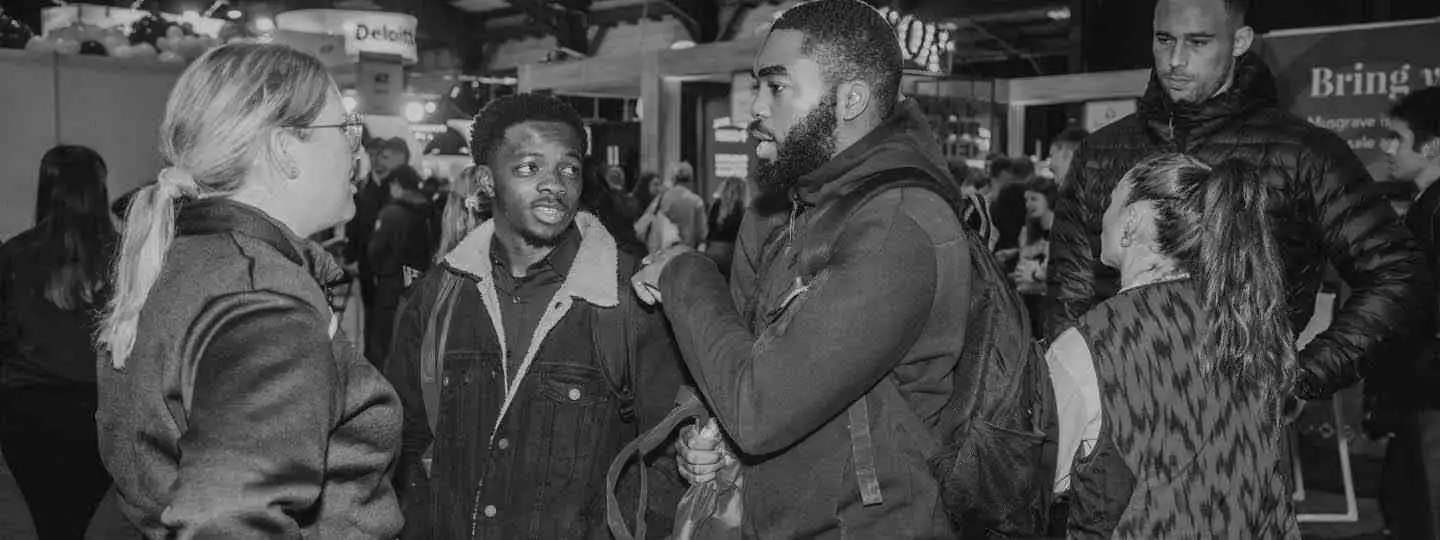How to perform your best with pre-recorded video interviews
27 Aug 2025, 10:24

Many application and assessment processes use pre-recorded video interviews - and if you’ve recently been through one, you’ll know they can feel awkward, impersonal, and difficult to navigate, especially if it was your first time. But with the right preparation and mindset, they can be an opportunity to showcase your strengths on your own terms, without the pressure of a live audience.
If you’ve recently been unsuccessful in a graduate job or scheme application, this guide is for you. We’re here to help you bounce back stronger, with practical advice to help you approach your next pre-recorded video interview with clarity, confidence, and control.
What are video interviews?
Unlike live interviews, pre-recorded interviews (sometimes called on-demand interviews) are asynchronous – meaning you’re answering set questions without an interviewer present. Typically, you’ll receive a link and a deadline to complete the interview. You’ll be shown or told the question, then given a set amount of time to think (usually 30 seconds to a minute), followed by a set time to respond (usually 1-3 minutes per question).
Some of the key differences between a standard interview and a pre-recorded interview:
- Standard interviews are live conversations with follow-ups, opportunities to clarify or ask questions, and interviewers can warm up to your personality over time
- Pre-recorded video interviews are one-shot answers with no feedback, no two-way interaction, and you need to make a strong impression quickly
This means that your answers need to be clear, concise, and high-impact from the first word. Most of the time, you’ll only get one chance to record each answer, and often can’t rewind or re-record, so preparation is essential.
Why do employers use them?
Employers use pre-recorded interviews to streamline high volumes of applicants – particularly for graduate schemes. It helps them compare responses consistently and at scale. But it can also make the process feel cold or one-sided for candidates, who miss out on the interaction and rapport-building of traditional interviews.
The key is learning how to make the format work for you.
How can you prepare for a pre-recorded video interview?
Like any interview, preparing well is crucial. While you won’t know the exact questions in advance, you can almost always guarantee the inclusion of:
- Tell me about yourself
- Why are you interested in this role/company?
- Describe a time when you worked in a team/solved a problem/overcame a challenge/exhibited a trait mentioned in the job description
Pro-tip: Use the STAR method (Situation, Task, Action, Result) to structure your answers, and keep them tight and focused.
How to perform your best in a pre-recorded video interview
Think of it like a performance, not a conversation. Without feedback cues like nods or smiles, it can feel like you are talking into the void. But you’re not – you’re speaking to a future hiring manager. Here’s how to make a great impression:
- Choose the right environment: choose a quiet, well-lit space with a neutral background where you won’t be disturbed. Natural light is ideal.
- Check your tech: before the interview, test your microphone and speakers. Do a practice recording (if the system allows) or use your camera to see how you speak and sound.
- Dress the part: dress as you would for an in-person interview - smart and professional, even if it’s just on the top-half!
- Engage like a pro: speak clearly and at a steady pace, smiling naturally as it can boost your energy and tone. Look into the webcam, not the screen, to maintain eye contact.
Common mistakes (and how to avoid them)
- Winging it: Practice responses out loud, especially under timed conditions. You’ll sound more confident and structured.
- Sounding robotic: Don’t memorise a script. Instead, write bullet points for key points during the practice time and speak naturally.
- Over-explaining: Stick to one clear point or story per question. Avoid long tangents and focus on what the employers is really asking.
- Bad lighting and audio: Film a test clip in your interview space – if it’s too dark or echoey, change location or use a lamp and headphones.
How to stand out (without being able to interact)
While you can’t build rapport in real-time, you can show you’ve done your homework and bring your personality into the room. Here’s how:
- Research the company well: subtly weave in what you admire about their mission, values, or recent work.
- Personalise your ‘why’: link your motivations to your experience, such as mentioning something you have done that links to their stated values.
- Be expressive: Vocal tone, eye contact and body language carry more weight when there’s no back-and-forth. Use gestures naturally, and don’t be afraid to show your enthusiasm.
Final thoughts:
If you’re struggling with the job application process or have been rejected from a graduate scheme or job, it can be easy to lose confidence. But every application is also a learning experience – and your next one could be the right one. Pre-recorded video interviews are a challenge, but they’re also a skill that you can learn.
With the right preparation, you’ll not only feel more confident, but you’ll also actually perform better. Take this time to sharpen your approach, practice your delivery, and show the employer who you really are.
targetjobs Editorial advice
This describes editorially independent and impartial content, which has been written and edited by the targetjobs content team. Any external contributors featuring in the article are in line with our non-advertorial policy, by which we mean that we do not promote one organisation over another.
